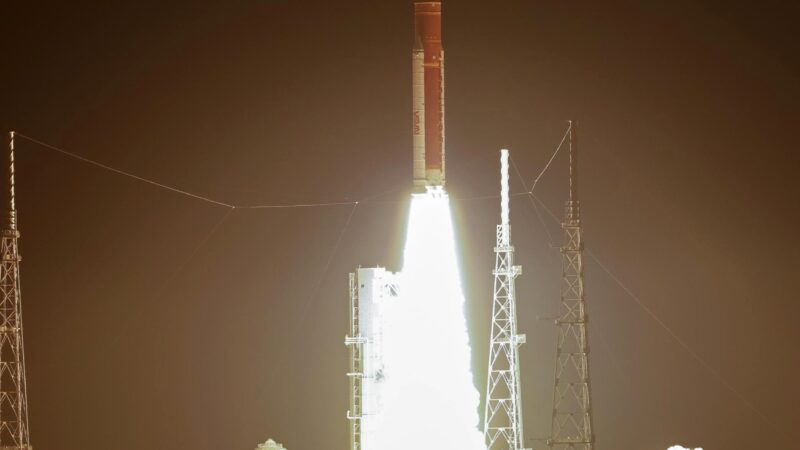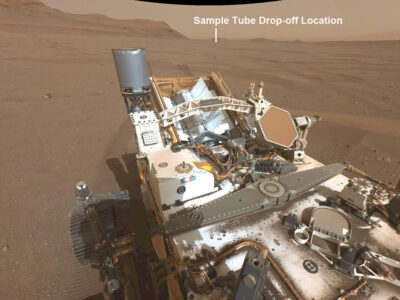Space surfing? NASA’s solar sails will take science to new heights
Improve the utilization of light lines
NASA has chosen a fascinating new project for further development, known as diffractive Solar Sail. By bending the light before it hits the sail, the device can propel the spacecraft more effectively than traditional propulsion techniques.

Solar Sail Concept Map
The project was selected as the third phase of NASA’s Innovative Advanced Concepts (NIAC) project. Phase III aims to make a strategic transformation of the NIC concept and maximize the potential impact on NASA, other government agencies, or business partners.
“As we explore the universe more deeply than ever before, we will need innovative cutting-edge technologies to advance our mission.” NASA Administrator Bill Nelson said. “NASA’s Innovative Advanced Concept Program helps unleash visionary ideas, such as novel solar sails, and bring them closer to reality.”
It’s science, not science fiction

Solar Sail Concept Map
Just as a sailboat uses the wind to cross the ocean, a solar sail uses the pressure exerted by sunlight to propel a spacecraft through space. Existing reflective solar sail designs are often very large, very thin, and limited by the direction of the sun, forcing them to strike a balance between momentum and navigation. Diffractive light sails will use small light curtains embedded in the film to take advantage of the diffraction properties of light (when light passes through narrow openings, diffraction properties cause light to diverge). This will allow spacecraft to use sunlight more efficiently without sacrificing maneuverability.
“Exploring the universe means we need new instruments, new ideas, and new ways of getting around.” Nasa Headquarters NASA Space Technology Mission Deputy Director Jim Lotter said. “Our goal is to invest throughout the life cycle of these technologies to support powerful innovative systems.”
The new Phase III award will provide the research team with $2 million over two years to continue technology development in preparation for potential future demonstration missions. The project was led by Amber Dubil of johns Hopkins University’s Laboratory of Applied Physics at Johns Hopkins University in Laurel, Maryland.
“NIAC has enabled us to develop some of the most innovative technology concepts in the aerospace sector.” Mike Laporte, PROJECT AGENT EXECUTIVE OFFICER FOR NIAC AT NASA HEADQUARTERS, SAID. “Our goal is to change that possibility, and the Diffractive Solar Voyage program promises to do just that in a series of exciting new mission applications.”
Diffractive light navigation will allow the capabilities of solar sails beyond what can be achieved by missions currently under development. The project was led by Amber Dubil of johns Hopkins University’s Laboratory of Applied Physics at Johns Hopkins University in Laurel, Maryland. The feasibility of this concept has previously been studied under the NIAC Phase I and Phase II Awards led by Dr. Glover Swartzland of the Rochester Institute of Technology in New York, where he continues to serve as a co-investigator for the project. Les Jensen, who is responsible for two upcoming solar sail missions at NASA’s Marshall Space Flight Center in Huntsville, Alabama, is also a joint investigator. Under early prizes, the team designed, manufactured, and tested different types of diffractive sail materials; conducted experiments; and designed new navigation and control schemes for orbiting light sail missions orbiting the sun’s poles.
Further optimization

Solar Sail Concept Map
Phase III work will optimize sail materials and conduct ground tests to support this conceptual solar mission. Using traditional spacecraft thrusters it is difficult to achieve orbits through the North and South Poles of the Sun. Lightly diffractive light sails propelled by constant solar pressure can place science spacecraft in orbit around the Sun’s poles to advance our understanding of the Sun and improve our space weather forecasting capabilities.
“Diffractive solar voyages are a modern interpretation of the vision of light sail from decades ago. While this technology could improve multiple mission architectures, it is expected to have a dramatic impact on the needs of the solar physics community for unique solar observation capabilities.” Dolby said. “With our team’s combined expertise in optics, aeronauticals, traditional solar voyages and metamaterials, we hope to enable scientists to see the sun in ways never before.”
NIAC supports visionary research ideas through multiple progressive research phases. In February 2022, NASA announced 17 phase 1 and phase 2 options. NIAC is funded by NASA’s STMD, which is responsible for developing the new cross-cutting technologies and capabilities the agency needs to achieve its current and future missions.
References:
[2]NASA-Supported Solar Sail Could Take Science to New Heights | NASA











hope it will be well